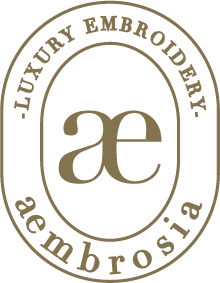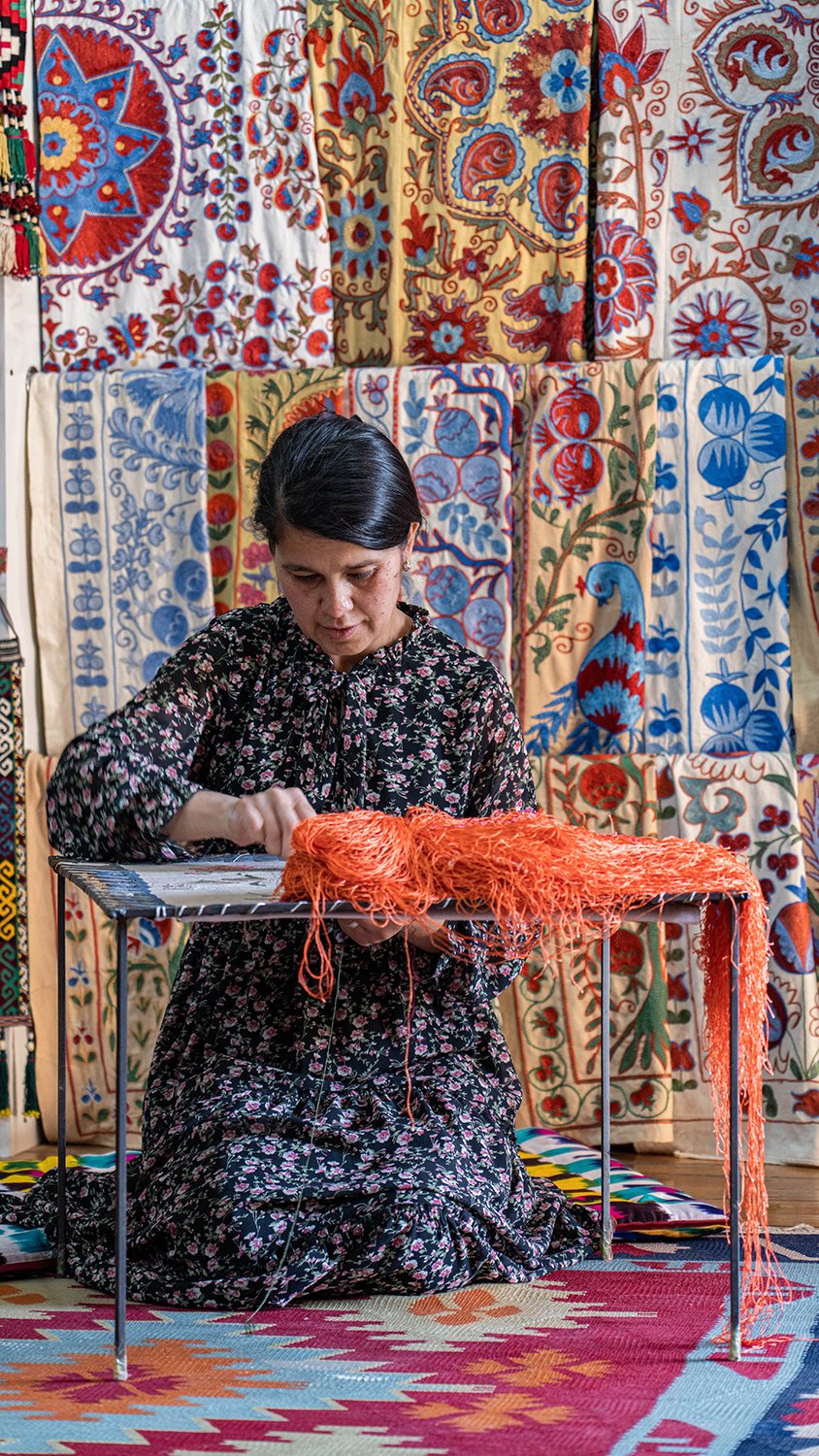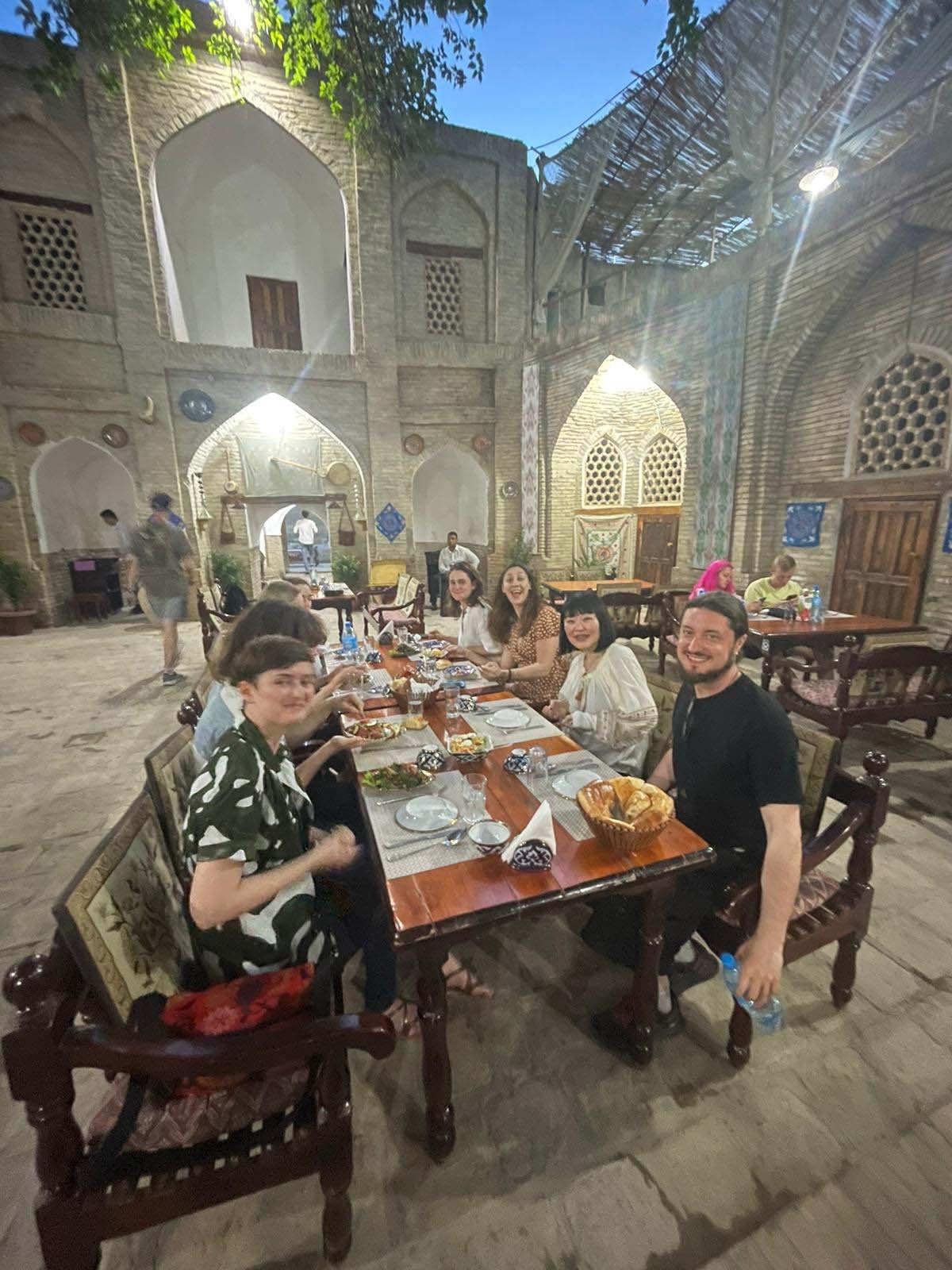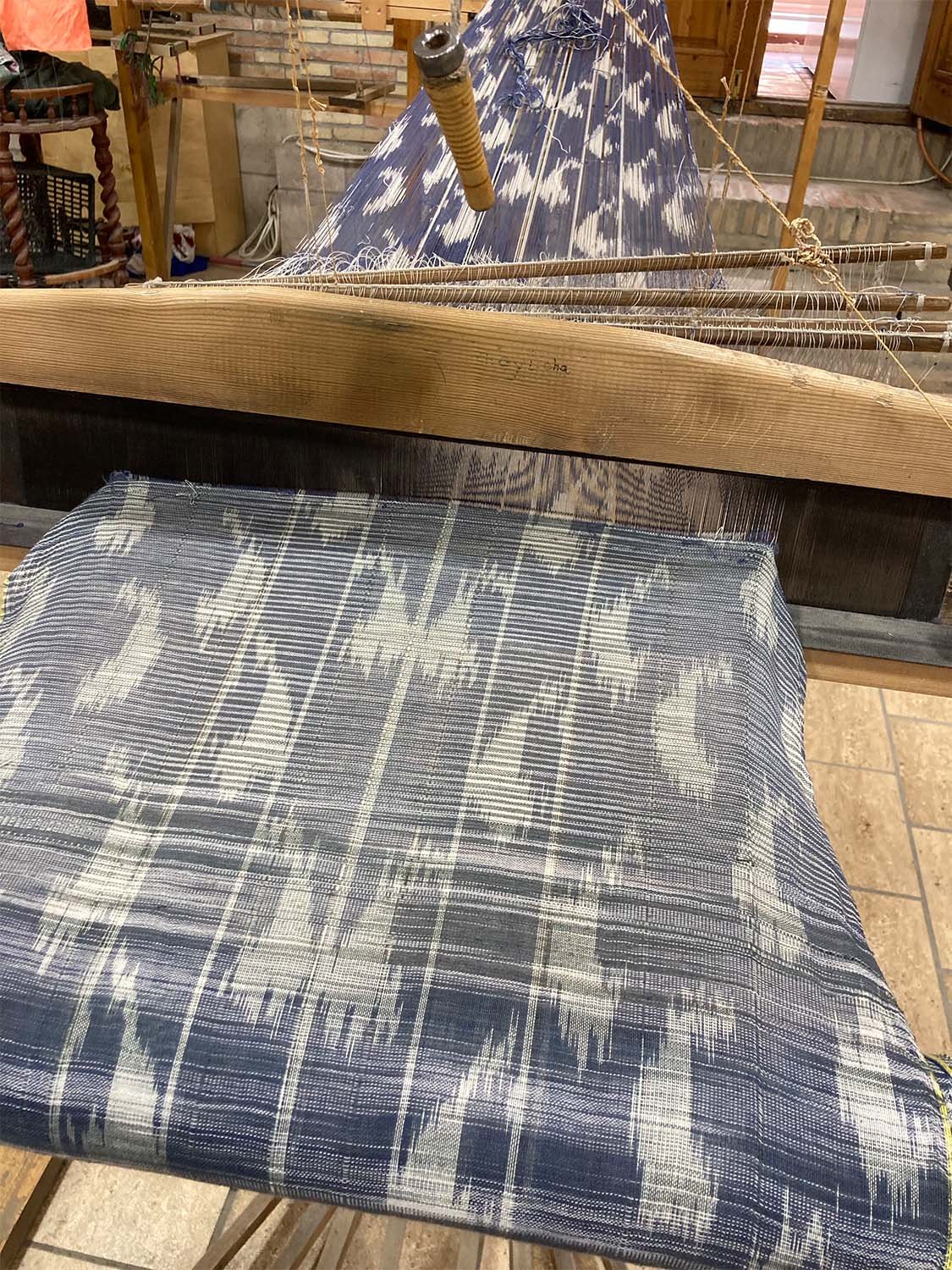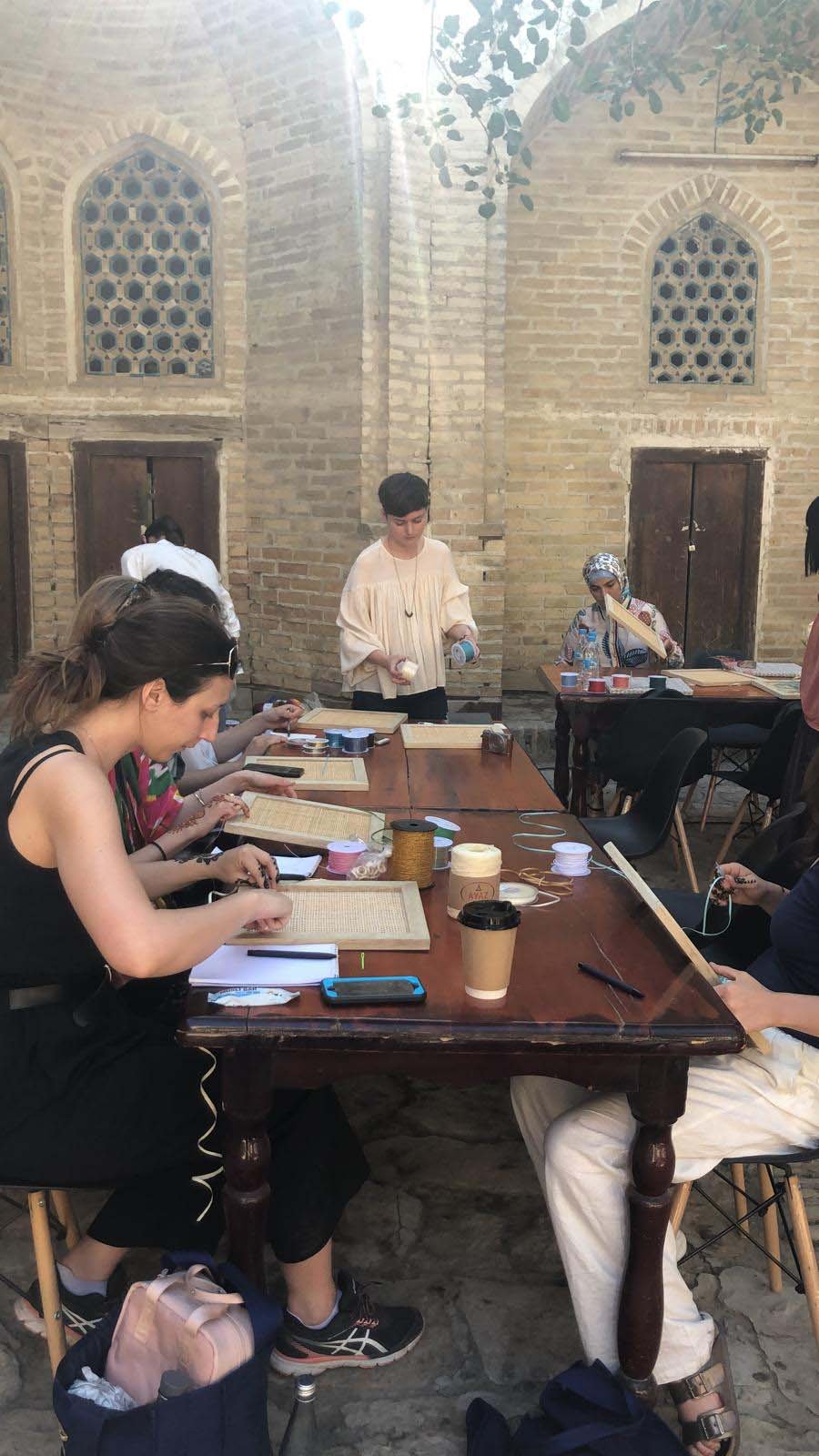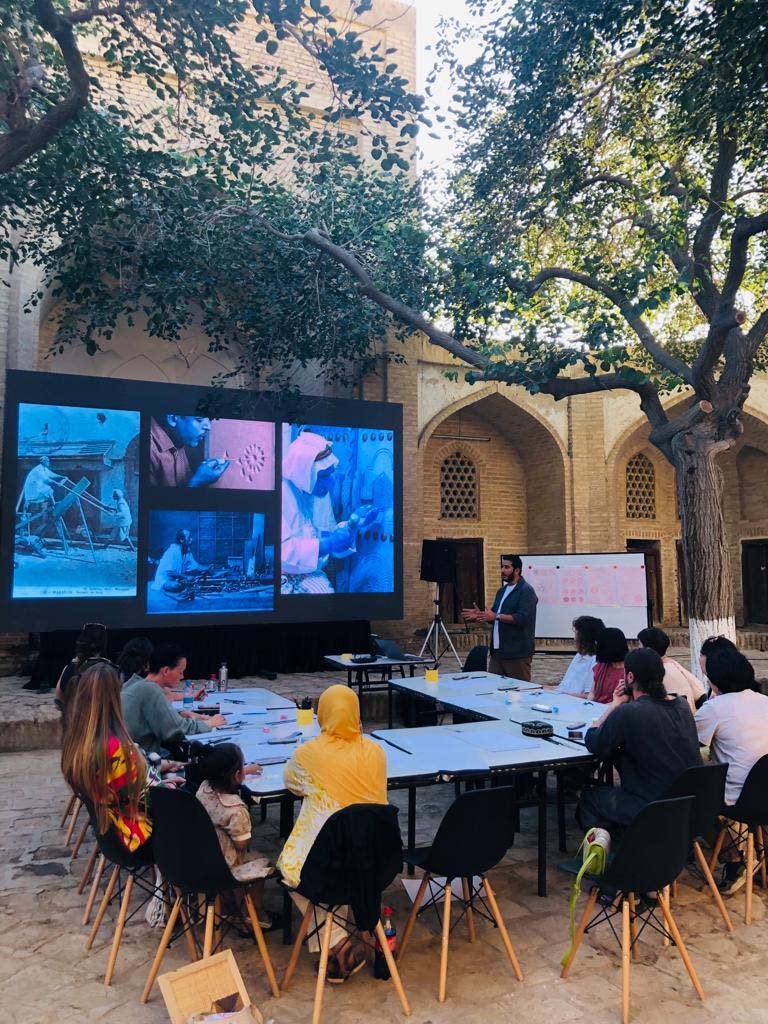Uzbekistan- A special travel
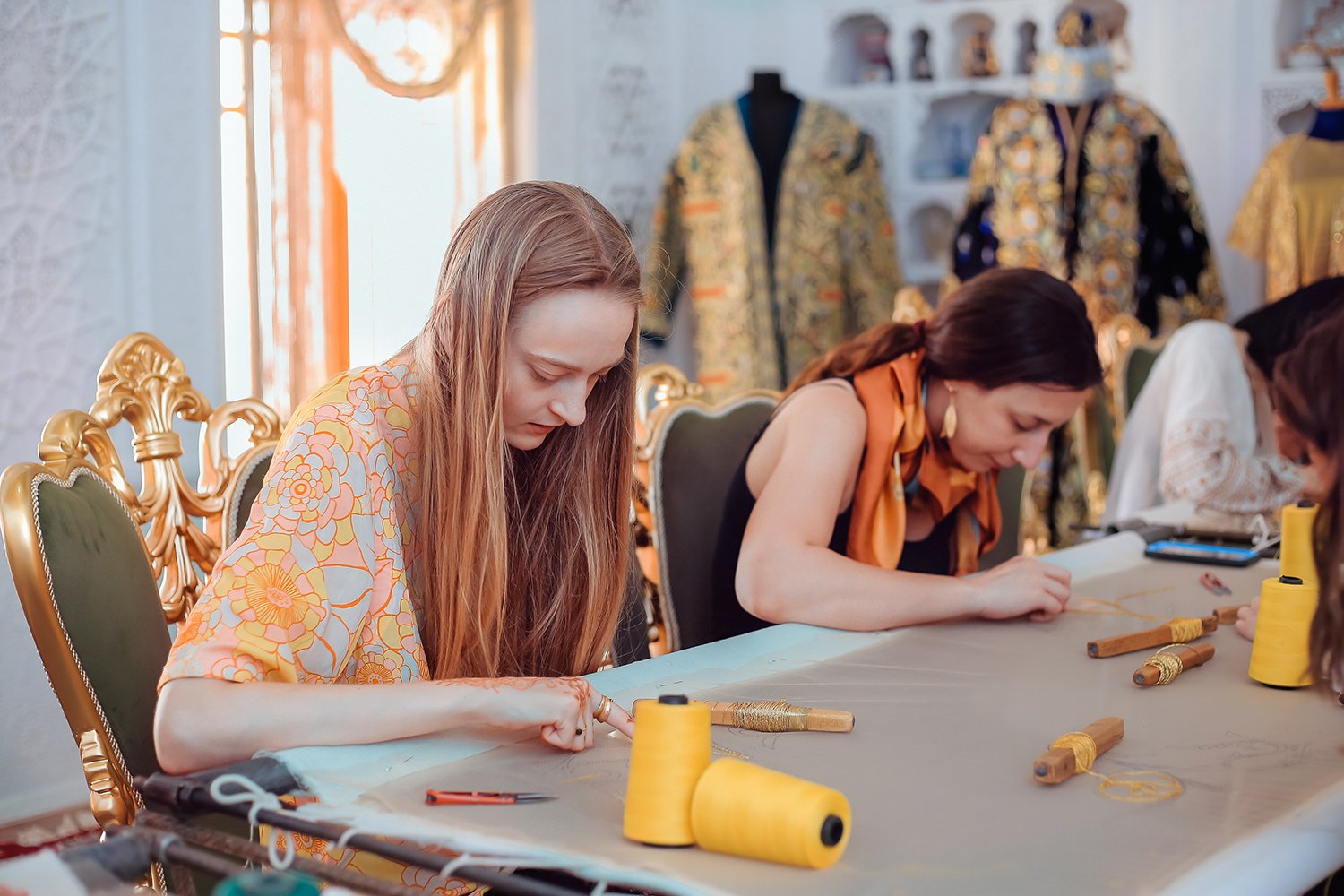
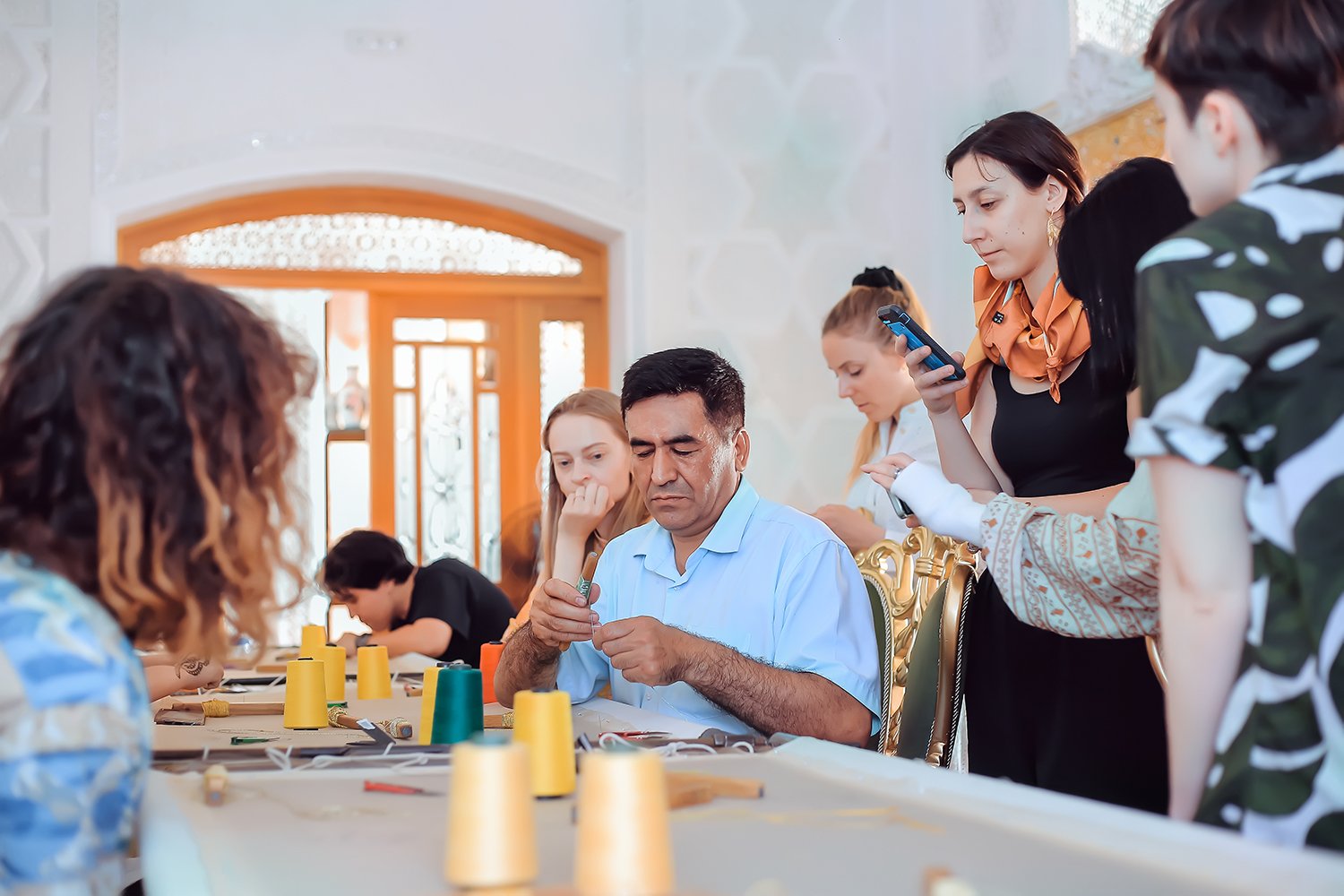
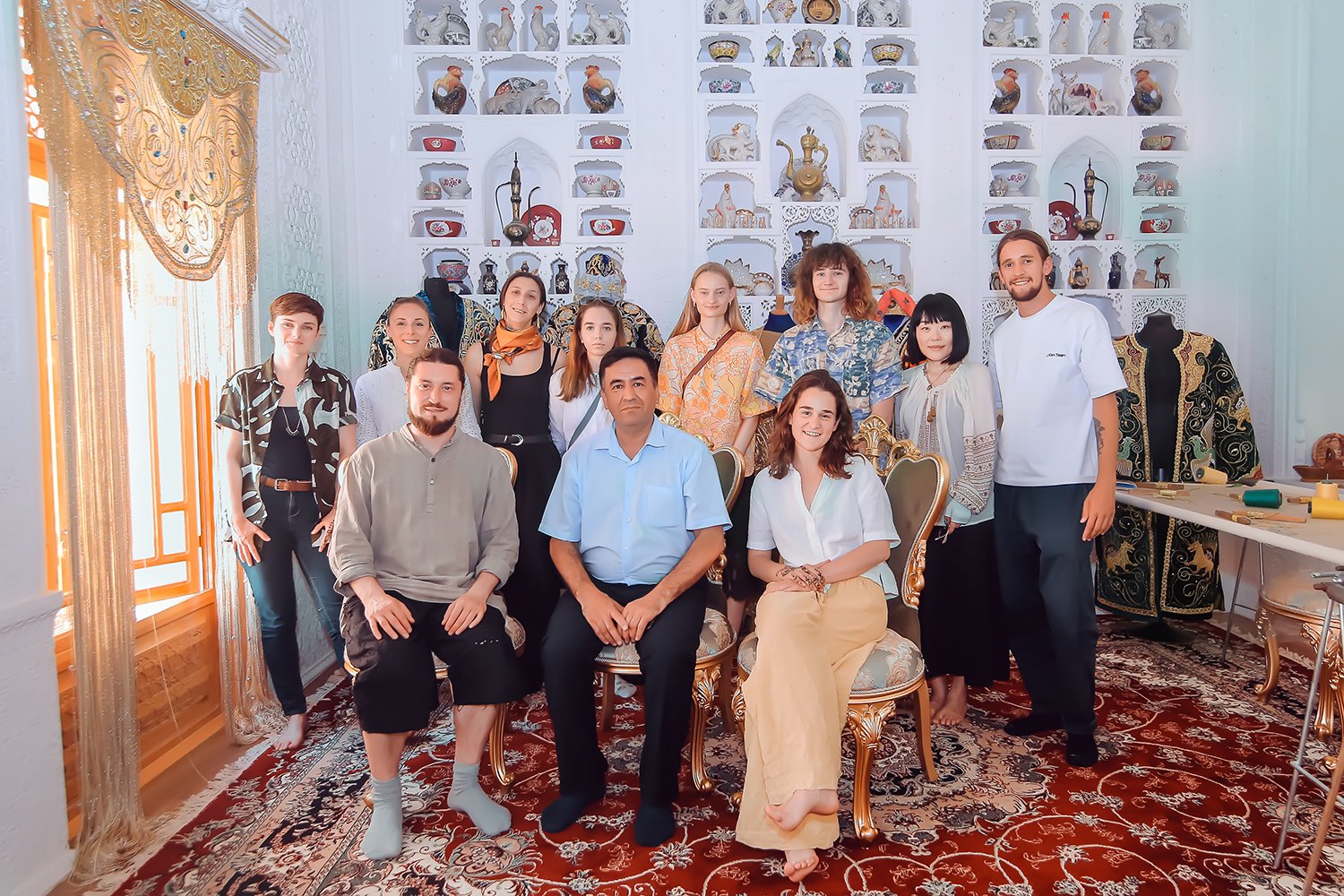
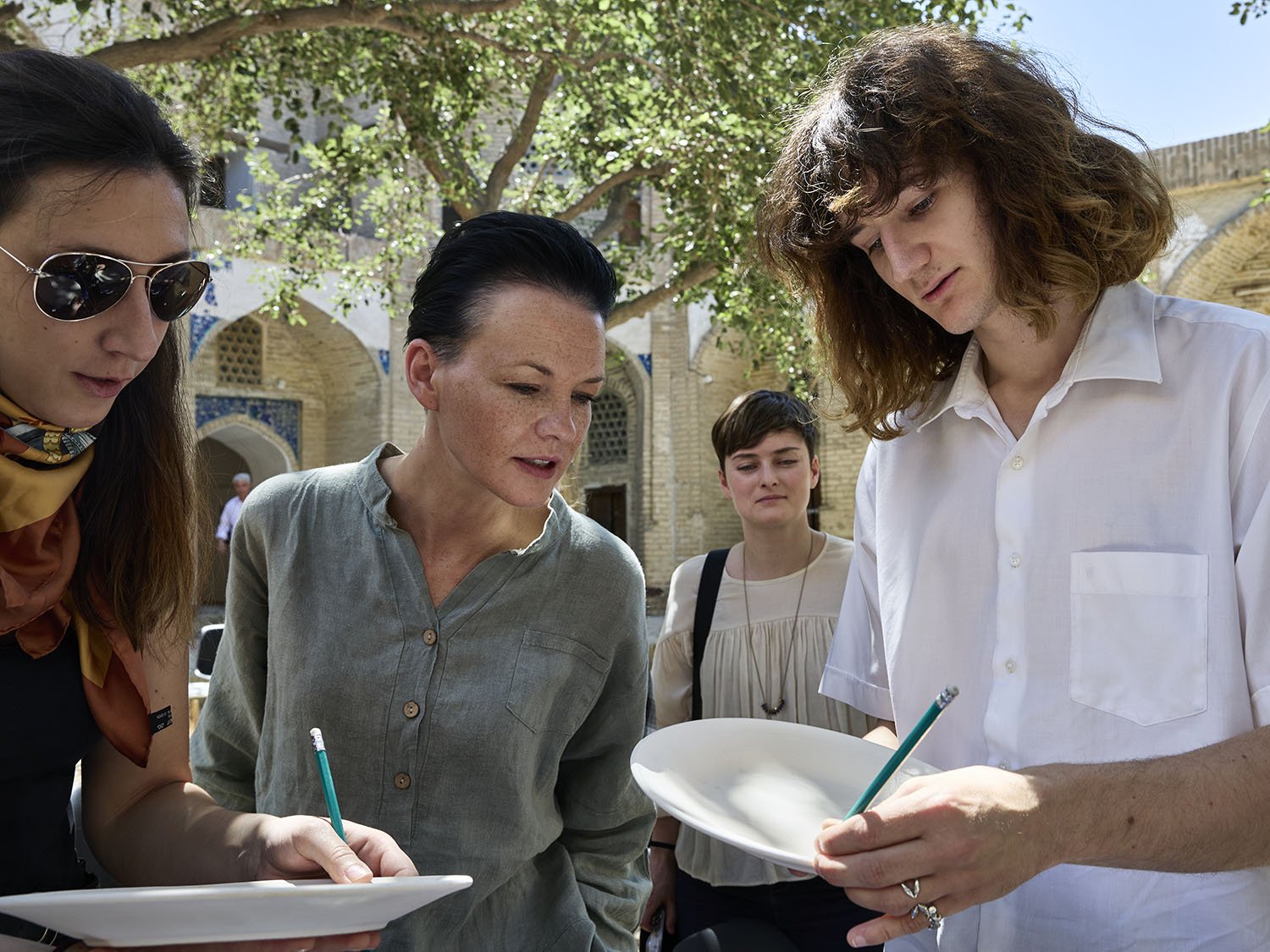
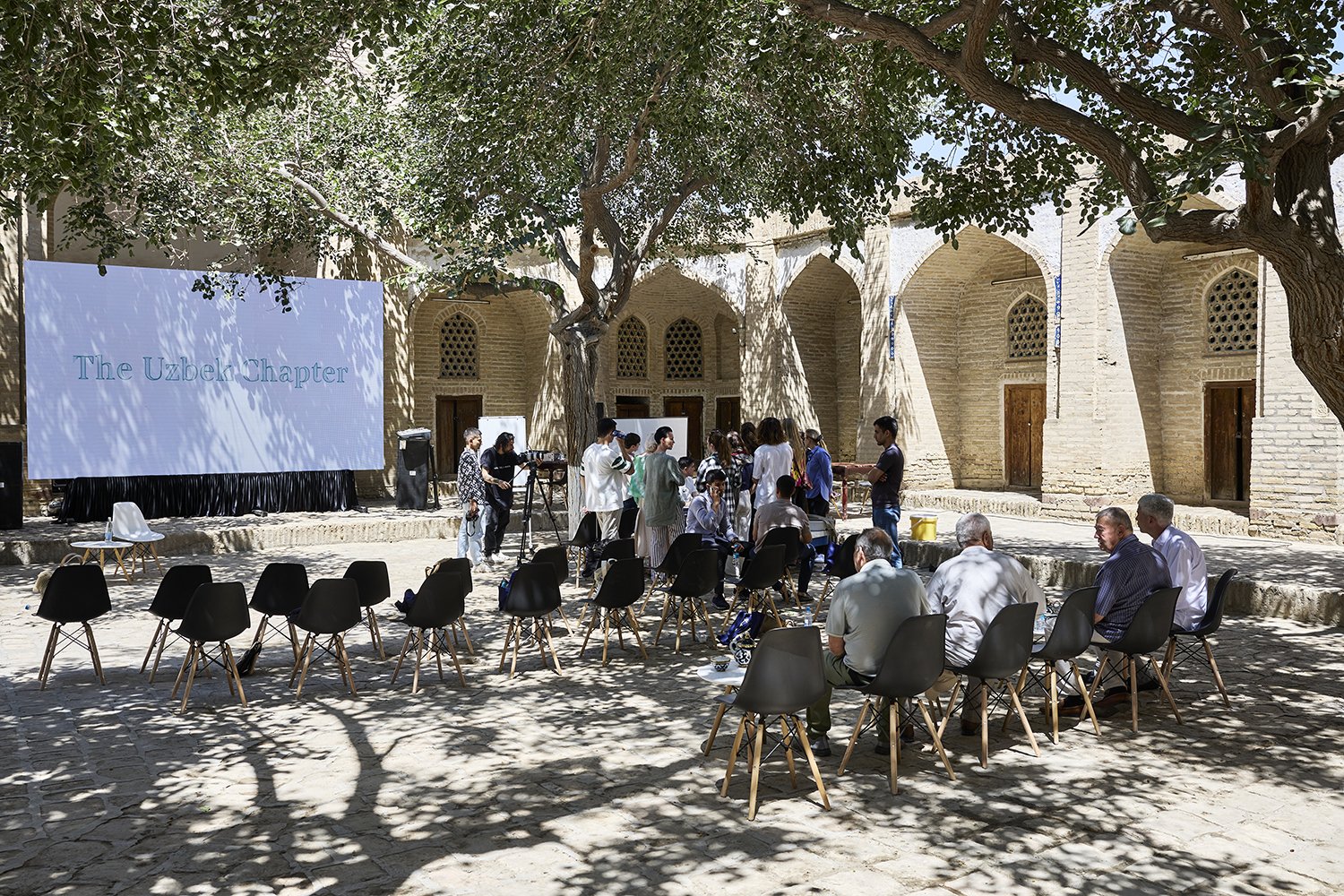
10 THINGS I learned about Uzbekistan and Bukhara:
(Per leggere in italiano, scorri in fondo!)
The culture is very unique, you can really feel that it was an important center on the Silk Road. The are influences from the Arabian and Islamic world, from the Russian domination, from Asia, and also from ancient cultures that lived here in the ancient times. But the strongest feeling is that the cultural contamination and the enrichment are always relaborated, made somehow very “Uzbek”.
The craftsmanship is really super fine! Bukhara especially is a well know center of crafts, and there is so many people that works with their hands and master ceramic, metal, miniature painting and other techniques.
The mastery of textile crafts is really super-probably thanks to the Silk Road. I have seen really wonderful textiles, I couldn’t believe my eyes! Hand weaved silks, ikat printed textiles, silk and camel wool carpets, and gold embroideries…I have never seen such a quality in textiles, and so widespread in use and in the culture!
They like intricate designs and very rich ornaments
I loved the tea that is always served at the end of the lunch. The fruit and the vegetables is super good! Eating vegetarian is not difficult, there are some dishes with vegetable/rice/mushrooms etc, and also is possibile to adapt a lot of typical foods. Everything super tasty!
Uzbekistan and Liechtenstein are the only two countries that are surrounded by countries that don’t have access to the ocean. (Anyway I think the Uzbekistan case is more remarkable, sorry Liechtenstein). You can really feel it in the dryness of the air! This also was super good for my skin and for my backpain, apparently.
The summer is super hot, like 35°, but manageable if you’re not under the sun, also because the architecture is studied to fight the heat (but also useful in the cold winter with -25°: very versatile!). It is also super windy sometimes, and I learned too well since I got a super strong sore throat!
Uzbekistan Airways has the best “emergency safety video” ever. The director of this video deserves an Oscar.
One day in April, I received an unknown call on my phone: I thought it was just another annoying call center, so I was really surprised to hear that it was the Michelangelo Foundation! They wanted to invite me to a special cultural exchange about craft and gold embroidery in Uzbekistan, in collaboration with the Uzbekistan Art and Culture Development Foundation.
I was stunned by this news and I couldn’t actually believe that they had selected me for this wonderful experience! (It was also a little bit of impostor syndrome probably)Anyway, I managed to make the luggage last minute when I actually realized that it was true, and I was going to visit Bukhara, a well known center of craft in Uzbekistan- famous especially for gold embroidery! I couldn’t wait.
The programme for the week was wonderful, and included several visits to craft masters and a few workshops, and I wasn’t alone- I had the chance to live this wonderful experience within other young embroiderers buddies. To me this basically means the chance to talk about stitches and needles all day long, and I couldn’t be happier (since in the normal life people look at me like if I was mad when I try to discuss the differences between the Spanish and the English goldwork embroidery and stuff like that).
It was also a great pleasure to spend a few days with the team of Michelangelo Foundation and with some reporters from all over Europe, and to attend the conference with Alberto Cavalli and the celebration of the “Uzbek chapter”: for the first time, eleven Uzbek master artisans entered the Homo Faber Guide. This is the main reason that gave life to this special cultural exchange about craft.
I have to say that I am stunned by the work that the Michelangelo Foundation has done in only seven years of work (+ pandemic in between!), and that all the persons I have met are really lovely and passionate in what they do.
I really can’t explain how much I loved this travel, and to know a country through its craft culture. It is an approach to travelling that really fascinated me, totally of another depth, so inspiring. I had the chance to know in person the best master artisans that worked with gold embroidery, to learn from them, and discuss the differences between our techniques (this is literally my dream, can we do it everyday?); but we also tried to knot carpets, to make ceramic and paint it, to make woodcarving, and even to be blacksmiths for a day (spoiler: I was totally lame on that)!
Last but not least, we had a workshop with the renowned designers Nada Debs and Ahmad Angawi, that both work with traditional heritage and crafts, and innovation. It was super - really what I needed to go further with my work and with my personal research.
This travel has given me a lot of inspiration, and also has made me think about my own roots, why embroidery is so fascinating to me and why I have chosen this work and this media.
10 COSE che ho imparato sull'Uzbekistan e Bukhara:
1. La cultura è davvero unica, si intuisce che Bukhara era un centro importante sulla Via della Seta. Ci sono influenze dal mondo arabo e islamico, dalla dominazione russa, dall'Asia, e anche da antiche culture che vivevano qui nei tempi antichi. Ma la sensazione più forte è che la contaminazione e l'arricchimento culturale siano sempre rielaborati, resi in qualche modo molto “uzbeki”.
2. L'artigianato è davvero di altissima qualità! Bukhara in particolare è un noto centro per l’artigianato, e ci sono così tante persone che lavorano con le mani e padroneggiano la ceramica, il metallo, la pittura in miniatura e altre tecniche.
3. La padronanza dell'artigianato tessile è davvero super, probabilmente grazie alla Via della Seta. Ho visto tessuti davvero meravigliosi, non credevo ai miei occhi! Sete tessute a mano, tessuti stampati ikat, tappeti in seta e lana di cammello, e ricami in oro…non ho mai visto tanta qualità nei tessuti, e così diffusa nell'uso e nella cultura!
4. Piacciono molto i disegni intricati e gli ornamenti molto ricchi e complessi
5. Ho adorato il tè che viene sempre servito alla fine del pranzo. La frutta e la verdura sono buonissime! Mangiare vegetariano non è difficile, ci sono alcuni piatti con verdure/riso/funghi ecc, ed è anche possibile adattare molti cibi tipici. Tutto super gustoso!
6. L'Uzbekistan e il Liechtenstein sono gli unici due paesi circondati da paesi che non hanno accesso all'oceano. (Comunque penso che il caso dell'Uzbekistan sia più degno di nota, scusa Liechtenstein). Puoi davvero sentirlo nell'aridità dell'aria! Anche questo è stato molto buono per la mia pelle e per il mio mal di schiena, a quanto pare.
7. L'estate è caldissima, tipo 35°, ma gestibile se non si è sotto il sole, anche perché l'architettura è studiata per combattere il caldo (ma utile anche nel freddo inverno con -25°: molto versatile!) . A volte c'è anche molto vento, come ho imparato fin troppo bene, infatti ho avuto un mal di gola fortissimo!
8. L’Uzbekistan Airways ha il miglior "video di emergenza sulla sicurezza" di sempre. Il regista merita un Oscar.
In un assolato giorno di Aprile, ho ricevuto una chiamata sconosciuta sul mio telefono: pensavo fosse solo un altro fastidioso call center, ma sono rimasta davvero sorpresa di sentire che si trattava della Fondazione Michelangelo! Mi hanno invitata ad uno scambio culturale in Uzbekistan, sull'artigianato e il ricamo in oro, in collaborazione con la Uzbekistan Art and Culture Development Foundation.
Sono rimasta sbalordita da questa notizia e non potevo davvero credere che mi avessero selezionato per questa meravigliosa esperienza! (Probabilmente era anche un po' la sindrome dell'impostore…) Ad ogni modo, sono riuscita a fare i bagagli all'ultimo minuto quando ho realizzato che era tutto vero, e stavo per visitare Bukhara, un noto centro di artigianato in Uzbekistan, famoso soprattutto per il ricamo d'oro! Non vedevo l'ora.
Il programma della settimana è stato meraviglioso, e comprendeva diverse visite a maestri artigiani e alcuni laboratori; non ero sola nel viaggio: ho avuto la possibilità di vivere questa meravigliosa esperienza insieme ad altre giovani ricamatori. Per me questo significa fondamentalmente la possibilità di parlare di punti e di fili tutto il giorno, e non potrei essere più felice!! (Di solito le persone mi guardano come se fossi matta quando provo a discutere le differenze tra il ricamo in oro inglese e quello spagnolo e cose del genere).
È stato anche un grande piacere trascorrere alcuni giorni con il team della Michelangelo Foundation e con alcuni giornalisti provenienti da tutta Europa; partecipare alla conferenza con Alberto Cavalli, e alla celebrazione dell’ “Uzbek Chapter”: per la prima volta, undici I maestri artigiani uzbeki sono entrati nella Guida Homo Faber. Questo è il motivo principale che ha dato vita a questo speciale scambio culturale sull'artigianato.
Non riesco davvero a spiegare quanto ho amato questo viaggio e conoscere un paese attraverso la sua cultura artigianale. È un approccio al viaggio che mi ha davvero affascinato, totalmente di un'altra profondità, così stimolante. Ho avuto la possibilità di conoscere di persona i migliori maestri artigiani che lavoravano con il ricamo in oro, di imparare da loro e discutere le differenze tra le nostre tecniche (questo è letteralmente il mio sogno, possiamo farlo tutti i giorni?); ma abbiamo anche provato ad annodare tappeti, a lavorare al tornio la ceramica e a dipingerla, a intagliare il legno, e persino essere fabbri per un giorno (spoiler- non è decisamente la mia strada)!
(Solo per te che sei arrivato così in fondo alla pagina: uno dei momenti migliori del video di emergenza dell’Uzbekistan Airways, una vera chicca)
